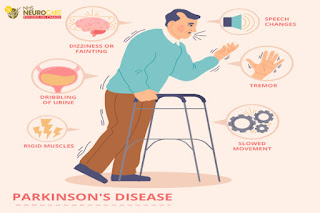The Main Cause of Parkinson's Disease and Treatment Options
Parkinson's disease is a progressive neurological disorder that affects millions of people worldwide. It primarily impacts the movement and motor skills of an individual, leading to tremors, stiffness, and difficulty in maintaining balance. In this article, we will explore the main cause of Parkinson's disease and the available treatment options to manage its symptoms.
What is Parkinson's Disease?
Parkinson's disease is a chronic and degenerative neurological disorder that affects the central nervous system. It primarily affects the dopamine-producing neurons in the brain, responsible for regulating movement and coordination. As the disease progresses, these neurons begin to die off, leading to a decrease in dopamine levels, and resulting in the onset of motor symptoms.
The Main Cause of Parkinson's Disease
Although the exact cause of Parkinson's disease is still unknown, research suggests that a combination of genetic and environmental factors may be responsible for its development. Mutations in certain genes, such as LRRK2 and PARK7, have been linked to an increased risk of developing Parkinson's disease. Exposure to environmental toxins, such as pesticides and herbicides, has also been linked to an increased risk of developing Parkinson's disease.
Parkinson's Treatment Options
Although there is no cure for Parkinson's disease, several treatment options are available to manage its symptoms effectively. The treatment plan for Parkinson's disease varies from person to person, depending on the severity of their symptoms and overall health status.
Medications: Several medications are available to manage the symptoms of Parkinson's disease. These medications include levodopa, dopamine agonists, and MAO-B inhibitors. Levodopa is the most effective medication for managing the motor symptoms of Parkinson's disease, but it may cause side effects such as dyskinesias.
Deep Brain Stimulation (DBS): DBS is a surgical procedure that involves implanting electrodes into the brain to regulate abnormal brain activity. It is an effective treatment option for managing motor symptoms such as tremors, stiffness, and bradykinesia.
Physical Therapy: Physical therapy can help improve balance, mobility, and flexibility in individuals with Parkinson's disease. It involves exercises that target specific muscle groups to improve strength and coordination.
FAQs
Q. Can Parkinson's disease be cured?
A. No, there is currently no cure for Parkinson's disease. However, several treatment options are available to manage its symptoms effectively.
Q. Is Parkinson's disease hereditary?
A. Although most cases of Parkinson's disease are not hereditary, research suggests that genetic factors may play a role in its development.
Q. What are the early signs of Parkinson's disease?
A. The early signs of Parkinson's disease include tremors, stiffness, and difficulty in maintaining balance.
Conclusion
Parkinson's disease is a progressive neurological disorder that affects millions of people worldwide. Although the exact cause of Parkinson's disease is still unknown, research suggests that a combination of genetic and environmental factors may be responsible for its development. While there is currently no cure for Parkinson's disease, several treatment options are available to manage its symptoms effectively. If you or a loved one is experiencing symptoms of Parkinson's disease, consult with a healthcare professional to explore the available treatment options.


Comments
Post a Comment